chloe. Link to review online http://chloeeleanor.wordpress.com

SEPTEMBER 13, 2012 · 9:32 AM
Maslen and Mehra Contemporise the Past: History and Politics, Nature and Culture in
Exceptional Photographs and Astounding Sculpture…
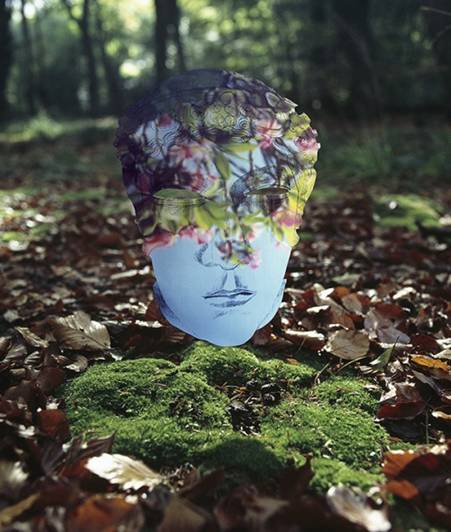
Venture into Deptford this September and right opposite the station, you’ll find that a whole host of artists have moved in – two of whom are Maslen and Mehra, a collaborative duo debating contemporary issues through a diverse range of mediums.
Having gained recognition for their photographic series Mirrored – an experimental photographic series which saw armies, animals and figures from all eras silhouetted in reflective aluminium take residence in both every day, and the world’s most memorable landscapes – the pairing have continued to use medium format cameras and mirroring for this new series of work:Impermanent Collection.
The exhibition is a manifestation of several trips Maslen and Mehra have made to the world’s finest galleries, museums and archaeological collections; clearly displaying their interest in history and scientific, sociological, political and cultural issues. For me, their sculptural pieces also highlighted the importance of ancient artefacts and historical artworks to our contemporary art culture – institutes such as the British Museum or the house collections of museums such as the V&A are often rebuffed in favour of something newer, seemingly more exciting, when in fact these early examples of creativity are incredibly valuable to our understanding of art today. You wouldn’t study politics without referencing its history, so why treat the arts any differently?
Maslen and Mehra pay tribute to artistic relics ranging from Eighteenth Century Chinese Kraak plates to Christian Louboutin’s shoes: there is no primary cultural reference – instead it is more a global anthropological study illustrated through skilfully crafted sculptures and technically brilliant photography.
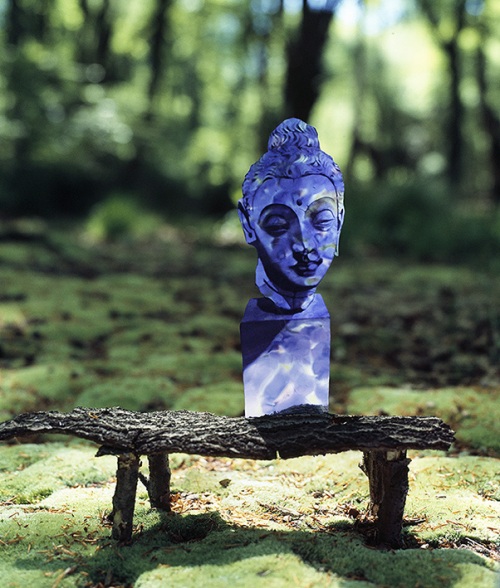
Although the artists still employ a combination of laser and hand-cut aluminium mirrors for their photographic work, they have now begun to paint, draw, work into these mirrors and to take printed images to the shoots as substitutes for reflections of the surrounding landscape. This allows the artists to have more control over the tone of the piece – for example this silhouetted copy of a 400-500AD Afghan Head of Buddha holds a blue haze and acquires a fitting dreamlike aura.
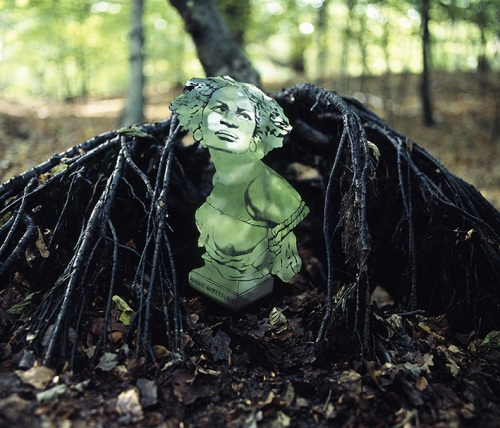
Still, however well-planned, the work is essentially site-specific and therefore inevitably down to chance; for example this 2D replica of La Négresse, J.B. Carpeaux, 1872 found its home entangled within the roots of a fortuitously discovered upturned tree which perfectly echo the swathes of rope which wrap the enslaved figure.
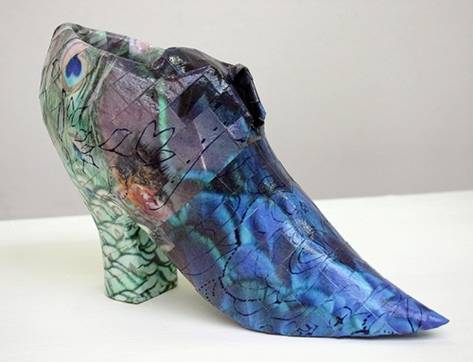
While the mirror pieces are immediately appreciated for their enchanting aesthetic, the couple’s sculptural pieces are far more subtle: ornate Victorian shoes are in fact embellished with bruises and wounds, flies cluster around the toes of a delicate Venetian Chopine and beetles crawl up the ankles of an Alexander McQueen – this display entitled Shoe Exhibit may imitate a recent V&A exhibition but its attitude towards the fashion industry, the way women lace themselves into unnatural garments and the economy of it all is far darker than the blue silks and pink velvets seen in the original assemblage.
These political points carry through into a series of fascinating adaptations of ceramic plates from all over the world. Upon first glance these are simply charmingly painted pieces of crockery, pieces which many people may walk straight past in museums; however what Maslen and Mehra highlight and expand upon, is that these artefacts had great meaning at their conception. Through digital printing, drawing, painting and collage, the themes of these items are contemporised so the set of eights plates now pictorially discuss global issues. When talking to Jennifer Mehra, she explained that while they could make these statements in a stronger more blatant way, they enjoy the process of the work and the idea that different viewers will discover and connect with different elements within their work – this I personally agree with, as I believe all art should have the ability to provoke a conversation, something which this series certainly does.
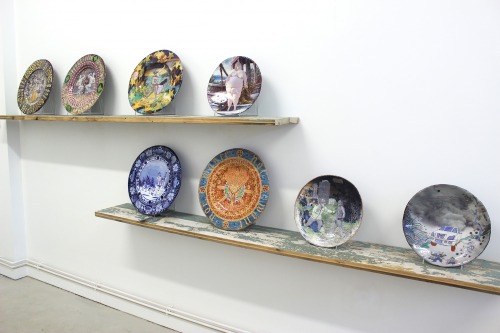
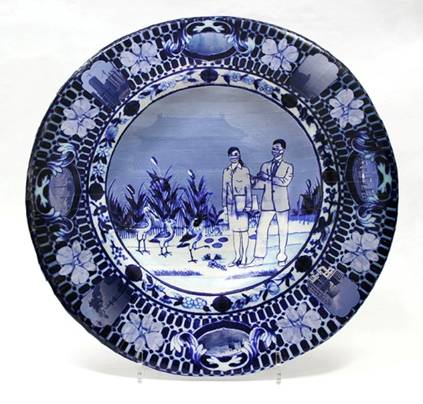
I won’t go through each and every plate as exploring the imagery is part of the fun of this exhibition, but two in particular stood out to me: firstly Profits and Poisons explores China’s recent economic boom and its unfortunate ecological consequences with photographs of their eight most polluted cities; and Food Futureswith its luminous golds and intense blue employs the motto ‘waste not want not’ to look at food security – food as a commodity, a political tool, rather than something to be harvested together and shared as
represented by the original ceramic which bore the same motto. These plates reveal a dense layering of imagery and meaning – some humorous, some serious – but all stunning and worth taking your time over to absorb each individual story.
Finally the totemic pieces which stand duty on the gallery floor: three busts adapted from museum pieces. Like Shoe Exhibit, these emulate the experience of museum viewing; however for me, they do so not only through the way they imitate museum set-up (plinths, information cards) but through their sense of the uncanny. Viewing works in museums is often uncanny as you are looking at a piece you are familiar with in reproduction, but not in reality, this is mimicked by the experience of viewing Maslen and Mehra’s sculptures: they are what you expect to see, altered. Instead of marble, they are paper, instead of being littered with soft cracks and imperfections they are plastered with lichen and printed with actual litter – signalling the competition between nature and culture which exists today.
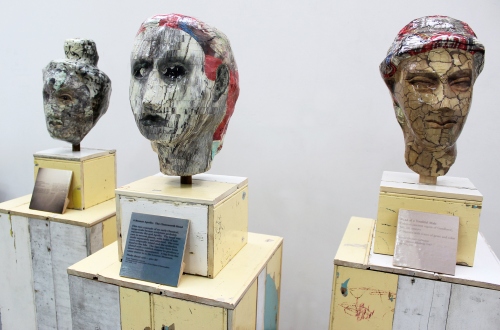
Impermanent Collection is a representation of three years’ worth of work which varies dramatically in its medium, but is unified in its discussion. It is so refreshing to see contemporary art which values and understands its heritage, and by that I mean art history on a global scale as we can no longer pigeon hole work into Western, Eastern, outsider art – or within contemporary art to only highlight political issues close to home. This exhibition is certainly an all-encompassing survey of art, history, political and cultural issues but it is not confrontational in the slightest; instead through the artists’ skill it has been refined, and by their choice the work is as elusive as it is frank, and as delicate as it is powerful.
A small but potent collection of treasures in an exciting new venue – well worth the Oyster.
Chloe Hodge